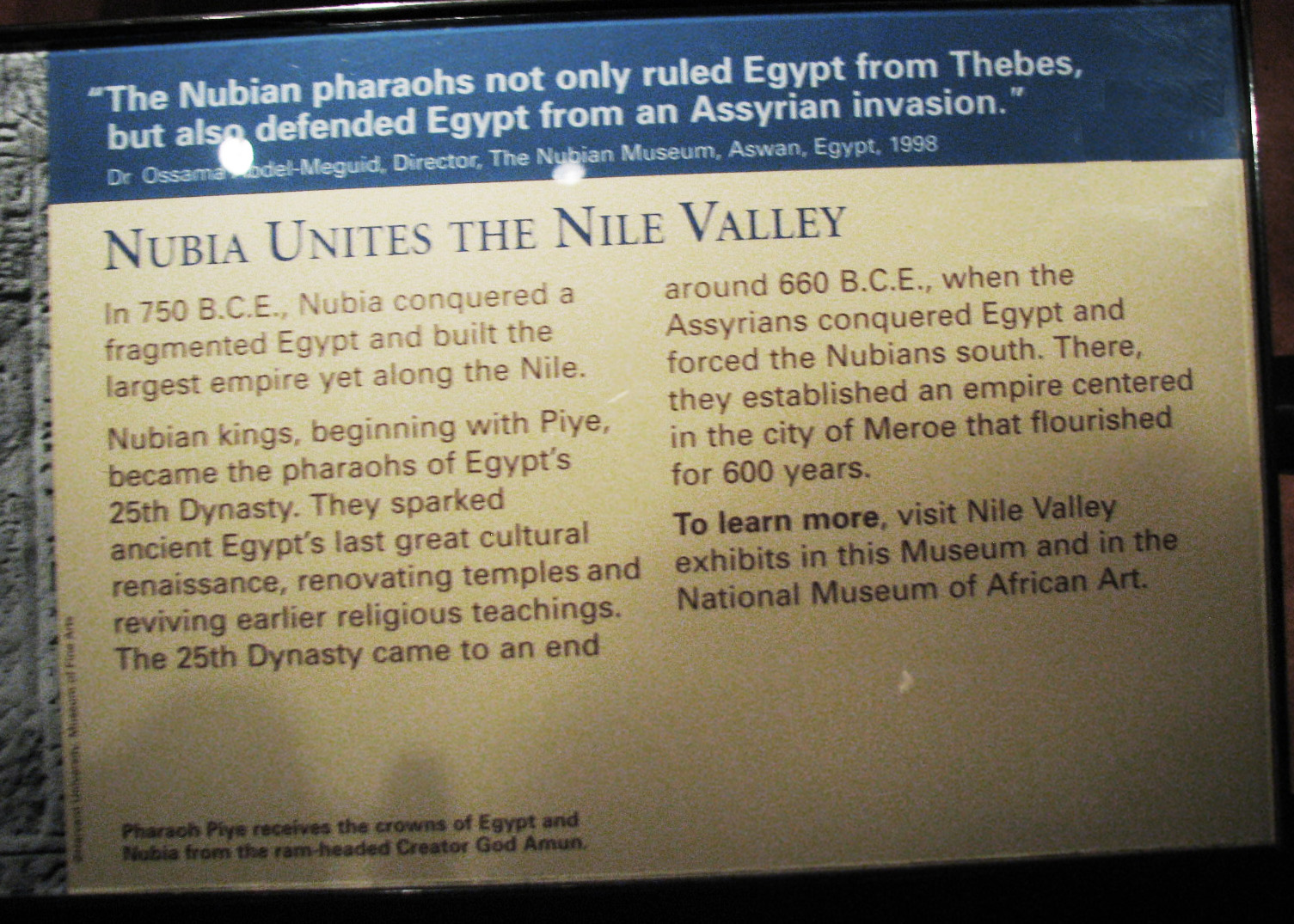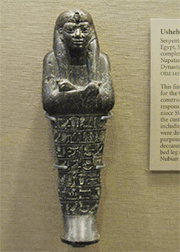
"The Nubian pharoahs not only ruled Egypt from Thebes, but also defended Egypt from an Assyrian invasion." Dr. Ossama {?}odel-Meguid, Director, The Nubian Museum, Aswan, Egypt, 1998
In 750 B.C.E., Nubia conquered a fragmented Egypt and built the largest empire yet along the Nile.
Nubian kings, beginning with Piye, became the pharoahs of Egypt's 25th Dynasty. They sparked ancient Egypt's last great cultural renaissance, renovating temples and reviving earlier religious teachings. The 25th Dynasty came to an end around 660 B.C.E., when the Assyrians conquered Egypt and forced the Nubians south. There, they established an empire centered in the city of Meroe that flourished for 600 years."
|

